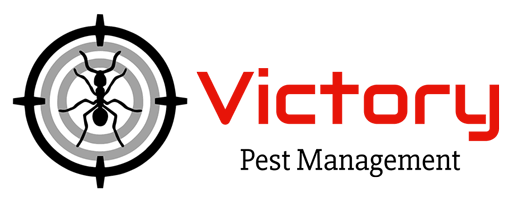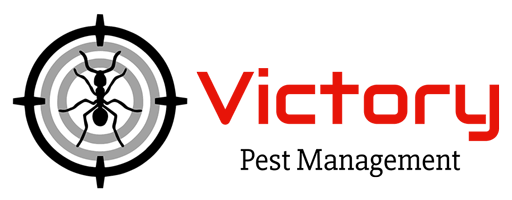Why Vacant Properties Attract Pest Problems
Steps To Prevent Pest Infestations In Vacant Properties
When a property sits vacant, it becomes an appealing target for pests. Empty rooms provide quiet shelter, unbothered spaces, and often a source of moisture that pests seek out. Whether it’s rodents finding their way into the attic or insects nesting in unseen corners, the absence of regular activity gives them the opportunity to settle in. While an empty home or building might seem harmless enough, ignoring it for too long without proper precautions can lead to structural damage, unpleasant odors, or even health hazards. Taking deliberate steps to deter pests can protect the property’s condition and save future headaches.
Why Vacant Properties Attract Pests
Empty buildings create the perfect backdrop for pests to thrive. A lack of human presence means fewer disturbances, making it easier for them to build nests, find food, and multiply. Even when a property is stripped of obvious food sources, tiny crumbs or residual smells can attract ants, cockroaches, and rodents. If there are water leaks, puddles, or damp areas, pests like mosquitoes, termites, and silverfish will have no trouble settling in.
Outdoor conditions can also push pests toward vacant properties. Changing weather, from sudden rain to extreme heat, often drives wildlife and insects to seek shelter indoors. Rodents are particularly good at finding weak spots in a building’s exterior, squeezing through small gaps or chewing through worn siding. Likewise, insects such as spiders, wasps, and flies take advantage of cracks and open vents to gain entry. Without someone there to notice the first signs of activity, infestations can develop quietly over time and remain hidden until the property is revisited.
Even surrounding vegetation can invite pests. Overgrown grass or shrubs near the foundation give insects and rodents a perfect cover to approach the structure unnoticed. This combination of ideal conditions means that simply locking the doors isn’t enough to prevent trouble. Proactive measures need to start from the outside and work their way in.
Strategies For Keeping Pests Out
One of the first steps in protecting a vacant property is ensuring the structure is properly sealed. Inspecting windows, doors, vents, and utility openings can reveal potential entry points that pests exploit. Even the smallest gaps around pipes or along the roofline can be enough for insects or mice to slip through. Weatherstripping, caulking, and fine mesh screens can go a long way in keeping these intruders outside where they belong.
Moisture control is another crucial factor. A property left unchecked with dripping faucets or a slow leak in the basement can become a breeding ground for pests that thrive in damp conditions. Regularly checking plumbing lines, gutters, and drainage systems reduces the risk of water buildup. Ensuring proper airflow and ventilation in attics and crawl spaces also discourages insects that favor humid environments.
It’s also wise to eliminate potential nesting materials. Stacks of old boxes, forgotten clothing, or piles of debris offer perfect hiding places. Even if the property isn’t fully furnished, keeping storage areas clean and uncluttered makes the environment far less appealing to rodents or insects. When a property is going to remain empty for an extended period, it’s smart to periodically remove any trash or organic waste from both inside and outside the building.
The yard and surrounding landscape play a bigger role than many realize. Overgrown vegetation, tree limbs brushing against the roof, and accumulated leaves around the foundation can create easy bridges for pests to cross. Trimming trees, cutting back bushes, and removing leaf piles or mulch buildup help keep insects and wildlife at a distance. For larger pests like raccoons or squirrels, making sure that chimneys and attic vents are securely capped adds another layer of protection.
Regular Monitoring And Maintenance
Even the best preventive measures can lose effectiveness if a property isn’t regularly checked. Scheduling periodic visits to walk through the building, look for droppings, gnaw marks, or insect activity makes a huge difference. These visits don’t have to be extensive, but they allow small problems to be identified before they spiral into full infestations. Something as simple as spotting a trail of ants near a window can signal the need for prompt action before the colony expands.
Another key aspect is ensuring that the interior remains less inviting to pests. Removing or sealing off any food sources is crucial, which means thoroughly cleaning kitchens, emptying pantries, and sealing trash bins tightly. Even pet food, birdseed, or dry goods left in cupboards can act like a magnet for mice and insects. Cleaning the property after each visit and inspecting hidden corners like closets or basements can significantly reduce the likelihood of infestations.
It’s also helpful to maintain a consistent level of care for the exterior. Checking the roof for missing shingles, clearing clogged gutters, and inspecting the foundation for new cracks are preventive steps that also protect the building’s overall structure. If the property is located in an area prone to wildlife activity, monitoring fences and boundary walls can prevent animals from nesting in sheds or garages.
For longer vacancies, many property owners opt to work with pest control professionals for ongoing monitoring. These services often include setting traps, applying treatments to vulnerable spots, and conducting thorough inspections that can catch early signs of infestation. This extra layer of oversight helps ensure that the property stays in good condition, even when months pass without anyone living there.
The Value Of Proactive Care
Preventing pest issues in vacant properties is more than just about avoiding nuisances. Infestations can cause real damage, from chewed wiring to structural weakening caused by termites or carpenter ants. Left unchecked, the repairs can become costly and time-consuming. Even beyond structural concerns, pests leave behind droppings, nests, and odors that require deep cleaning before the property is suitable for occupancy again.
The good news is that taking early, consistent measures can drastically cut down these risks. A vacant property that’s routinely maintained, sealed, and inspected is far less appealing to pests than one that’s ignored for weeks on end. While it might seem unnecessary to pay close attention to a building that’s empty, these preventive steps can make the difference between a quick turnover for new occupants and a long, expensive cleanup.
Empty homes and buildings are magnets for pests, but that doesn’t mean they have to become infested. With consistent attention, from sealing gaps to maintaining both the interior and exterior, the chances of pests settling in are greatly reduced. At Victory Pest Management, we understand the unique challenges that vacant properties face, and we’re dedicated to helping property owners protect their investments. Whether it’s a seasonal home, a building awaiting sale, or a space under renovation, our team provides the expertise and thoroughness needed to keep pests from taking over.
If you want to ensure your vacant property stays in top condition and free of unwanted invaders,
contact Victory Pest Management today. We’ll work with you to create a preventive plan tailored to your property’s needs, offering solutions that keep pests at bay and give you peace of mind knowing your building is protected.



